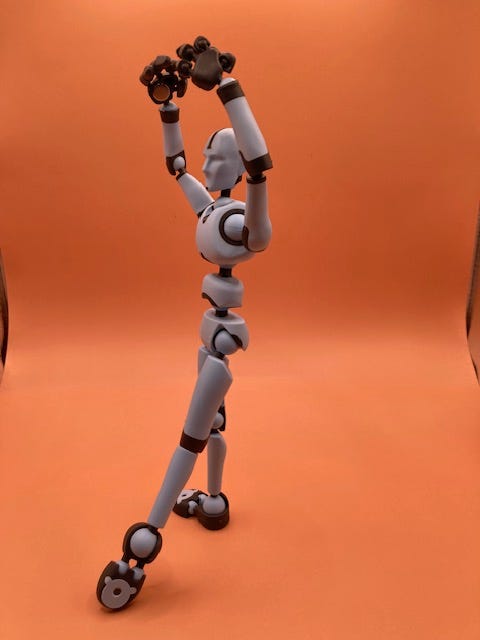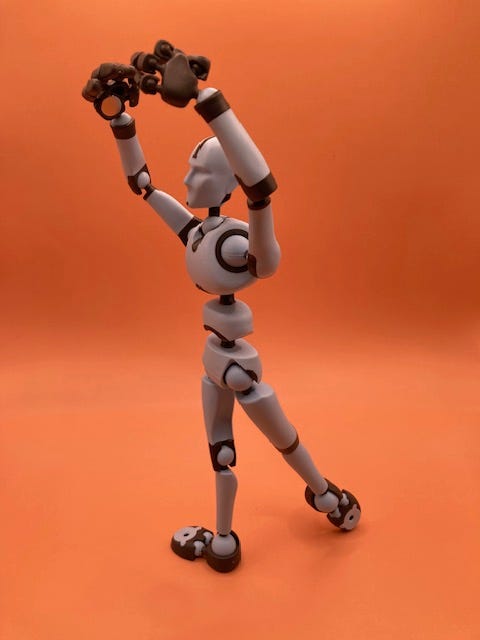French For Dancers: À Terre, En L’Air, and Terre À Terre
French For Dancers
Demystifying dance terminology and steps for dancers and dance-lovers!
Issue 33: À Terre, En L’Air, and Terre À Terre
Bonjour! Welcome to French For Dancers
Three ballet terms that indicate the height of a movement in relation to the ground are À Terre, En L’Air, and Terre À Terre. Before we proceed to any more exercises, it’s good to learn (or review) these.
Parlez-Vous Ballet?
(Do you speak Ballet?)
À TERRE
(ah tair)
À Terre means on the ground. Terre is ground, from the same word root as terra (ground, land, earth).
The term Par Terre is also sometimes used (also meaning on the ground). It’s just a different preposition. (This term is similar to the word parterre, which is an ornamental design or arrangement of flower beds, and can also mean the back and rear of the lower level of seats in a theater.)
Both à terre and par terre indicate that a step is done touching the ground. The terms can be used interchangeably, though some steps are usually linked to one or the other.
EN L’AIR
(on lair)
En L’Air means in the air. This indicates that a step will either fully take place off the ground, or that the working leg will be off the ground, such as in a balance, jump, or movement like a rond de jambe.
Steps where the qualification between à terre and en l’air is often needed include passé, rond de jambe, or a position such as an arabesque, to indicate that the movement stays on the ground.
In a passé par terre, the working foot moves from a tendu front through first position to a tend back (or in the opposite direction). This is similar to the battement en cloche we looked at in Issue 18, but only in the tendu version with the toes of the working foot staying connected with the ground.
Similarly, rond de jambe à terre keeps the working foot on the ground. We will be looking at rond de jambe en l’air in an upcoming issue! Arabesque à terre uses the arabesque arm position and keeps the back leg in tendu.
TERRE À TERRE
(tair ah tair)
Terre à terre means ground to ground. It refers to steps, or a combination of steps, which are done near the ground. These could be a low arabesque and pas de bourrée, or a glissade, or any petit allegro jump or hop that isn’t expected to go too high off the ground.
Terre à terre exercises were a mainstay of 19th Century ballet classes and choreography, still with quick, precise footwork, but close to the ground. The athleticism of the modern dancer has led to ever-increasing feats of height in allegro, but the groundwork (literally!) must also be learned and understood – and is still featured in ballet choreography.
Savoir-Faire
(Know-How)
Student Tip:
These three terms might feel like the Three Bears of Ballet (will Goldilocks choose low, medium, or high?!).
Mastering the à terre versions of steps and positions before moving on to the en l’air versions seems obvious, but it’s also important for reasons of placement, strength, and artistry. Just as we practice at the barre before moving to the center, we must ensure that our technique is ready to move on to more advanced movements before proceeding.
For example, take a simple tendu back (this is à terre). Check that both standing legs are turned out, hips square, and that you can balance. Then, lift your leg (en l’air) and see if you can maintain your stance and balance without shifting weight, hips, or changing your upper body’s position.
Teacher Tip:
As teachers and choreographers, we must be clear with our dancers on how we want movements to be performed.
Showing the difference between a step done terre à terre versus with more lift can help students understand the dynamics of movement. In a glissade, for example, the lower version still needs to be stretched through both legs but does not have to lift as high – this could be used in a combination for an adagio or a more grounded petit allegro. The higher version of a glissade might be used in combination with bigger petit allegro jumps, or in grand allegro.
Both are correct, both have merit, and each one brings its own style and energy to the combination.
À La Carte
(From the Menu)
Recommendations, reflections, and/or useful links
C’est la nuit des Oscars! (It’s Oscar night!)
I’m a sucker for the Academy Awards. I have fond memories of staying up late watching them with my mom, enjoying the pageantry and film montages even if I hadn’t seen many (or any) of the nominated films. She would give me quick insights into the films, stars, and Hollywood lore as we watched. We laughed at the tackiness of the Best Song extravaganzas (this was the 1980s and 1990s), cheered for our favorites, and got misty-eyed at the “In Memoriam” segments.
I was always so excited when a movie musical was nominated – this was my beloved world of song and dance being recognized and elevated to the top tier! In the first 96 years of Oscars, only 10 musicals have taken home the top prize of Best Picture:
· The Broadway Melody (1929)
· The Great Ziegfeld (1936)
· Going My Way (1944)
· An American In Paris (1951)
· West Side Story (1961)
· Gigi (1958)
· My Fair Lady (1964)
· The Sound of Music (1965)
· Oliver (1968) – also won an Honorary Award for its Choreography
· Chicago (2002)
This year, Wicked is nominated for 10 Oscars, and while it may not win Best Picture against some tough competition, it deserves to pick up some design and tech awards, and might garner an award or two for its fabulous leading ladies, Cynthia Erivo and Ariana Grande. Win or not, I am looking forward to their performance, along with all the other hoopla and fun!
Dance Magazine ran an article in December on Wicked’s choreographer Christopher Scott, and how he approached the process of creating the dances for the film. It’s an interesting read!
And now, it’s time to get red carpet ready (as in, comfy clothes, slippers, and a blanket)!
Merci!
(Thank you!)
Thank you for reading this newsletter! If you have friends who might enjoy this, please share the link with them!
- Peggy






